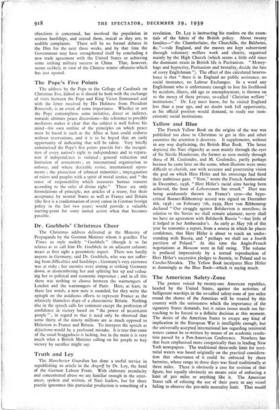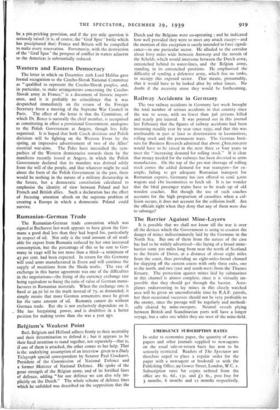The American Safety-Zone
The protest voiced by twenty-one American republics, headed by the United States, against the activities of belligerent warships in the so-called safety-zone of 30o miles round the shores of the Americas will be treated by this country with the seriousness which the importance of the signatory States demands, but it raises issues much too far- reaching to be forced to a definite decision at this moment. The desire of the American States to escape any kind of implication in the European War is intelligible enough, but the universally accepted international law regarding territorial waters cannot be re-written by means of an academic resolu- tion passed by a Pan-American Conference. Nowhere has that been emphasised more categorically than in leading New York newspapers. The traditional three-mile limit for terri- torial waters was based originally on the practical considera- tion that observance of it could be enforced by shore batteries, whose range in those days was fixed traditionally at three miles. There is obviously a case for revision of that figure, but equally obviously no means exist of enforcing a limit of 30o miles or anything like it. The American States talk of refusing the use of their ports to any vessel failing to observe the Soo-mile neutrality limit. That would be a pin-pricking provision, and if the 300 mile question is seriously raised (it is, of course, the Graf Spee ' battle which has precipitated that) France and Britain will be compelled to make every reservation. Fortunateiy, with the destruction of the ' Graf Spee ' the prospect of conflict in waters adjacent to the Americas is substantially reduced.































 Previous page
Previous page